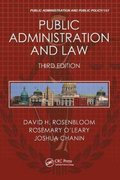Question
Suppose a wholesaler sells units of capital (K) to firms, which then have laborers (L) use units of this input to produce units of output
Suppose a wholesaler sells units of capital (K) to firms, which then have laborers (L) use units of this input to produce units of output (Q). The firm offers quantity discounts on the units of K that it sells. Specifically, the price of K is PK = $6 for the first 10 units purchased, the price of K is PK = $4 for the next 10 units purchased (i.e., for the 11th through the 20th unit), and the price of K is PK = $2 for all additional units purchased (i.e., the 21st, 22nd, etc.).
If a firm purchases units of K solely from the wholesaler and has a budget of B = $300, then graph the firm's isocost curve if the price of labor (L) is PL = $20. I recommend measuring L along the vertical axis and K along the horizontal axis. Be certain to properly label the vertical and horizontal axes, the quantities of capital and labor at each of the discount points, and the vertical and horizontal intercepts. Considering the isocost curve, can you determine the linear equation that corresponds to each segment?
Step by Step Solution
There are 3 Steps involved in it
Step: 1

Get Instant Access to Expert-Tailored Solutions
See step-by-step solutions with expert insights and AI powered tools for academic success
Step: 2

Step: 3

Ace Your Homework with AI
Get the answers you need in no time with our AI-driven, step-by-step assistance
Get Started


